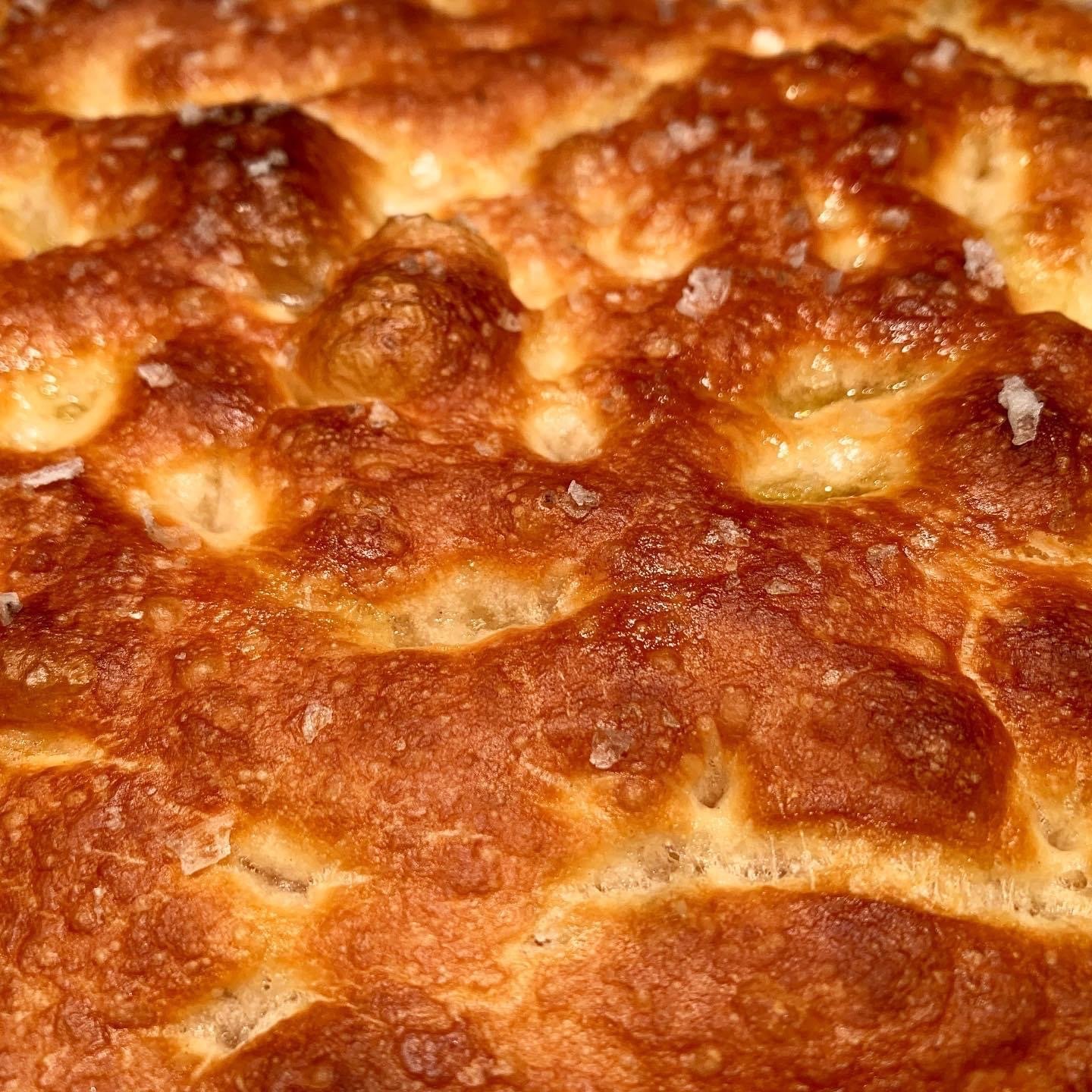It’s taken a long time for us to break with American tradition and use olive oil instead of butter for baking. Now, everywhere we turn, we discover a new olive oil cake recipe, almost always flavored with citrus. Sometimes it includes ginger, or almonds, pistachios or even “drunken grapes.” However, the Italians have been making olive oil cakes for centuries. One medieval Tuscan recipe calls for chestnut flour, pine nuts and rosemary - though no leavening - so it is quite a dense, earthy-looking cake.
There are advantages to using olive oil instead of butter in baking: olive oil’s monounsaturated fat has a small fat crystal that gives a fine texture to cakes. Butter forms large fat crystals which result in a denser texture. Olive oil also contains tocopherols - antioxidants - that slow the process of cakes getting stale.
It’s always safe to use a milder olive oil if you don’t want the EVOO flavor to shine through. Arbequina olive oil has a delicate taste, while Tuscan varietals are more robust. For our Lemony Ricotta Olive Oil cake we use a medium robust oil - which is what our Tuscan blend extra virgin olive oil is - to balance out the citrus.
Lemony Ricotta Olive Oil Cake
Makes one 9-inch cake
Ingredients
1 1/3 cups of ricotta cheese blended smooth in a food processor
2/3 cups of extra virgin olive oil
zest of 2 lemons
1/4 cup of lemon juice
1 1/2 cups of sugar
3 eggs
1 1/2 cup all-purpose flour or gluten-free flour such as Red Mill 1:1 flour
3/4 cup almond flour made from blanched almonds
1 Tbs baking powder
1/3 tsp soda
3/4 tsp salt
Instructions
Preheat oven to 350 degrees. Prepare a 9” springform pan by brushing with olive oil and lining the bottom with parchment paper. Lightly brush the paper with oil.
In a large mixing bowl, whisk the ricotta, olive oil, lemon juice, sugar and zest until completely combined. Next, whisk in eggs, one at a time, mixing until completely blended.
Into a separate large bowl, sift together the flour, almond flour, baking powder, baking soda and salt. Then gently whisk together.
Transfer the dry ingredients into the wet ingredients and fold together with a spatula just until combined.
Pour into prepared springform pan and bake for 50-55 minutes. Check at 50 minutes to see if browned on top and wooden skewer comes out clean.
When done, place on a cooling rack and let cool before removing from pan.
Decorate with powdered sugar right before serving.
Cake can be stored for 3 days. Store tightly wrapped in plastic wrap at room temperature.
No-Knead Focaccia
10-12 servings
We like plain focaccia with its shiny oiled, salty top for snacking on Sunday afternoons before our family Sunday Night Dinners. But you can use your imagination and use toppings to make an impressive appetizer for company dinners. We’ve included some suggestions below. (This basic focaccia is based on a Bon Appétit recipe.)
Ingredients
1/4-oz. envelope active dry yeast (about 2 1/4 tsp.)
2 tsp honey
2 1/2 cups lukewarm water
5 cups all-purpose flour
5 tsp Kosher salt
6 Tbs extra virgin olive oil, plus more for hands
Flaky salt such as Maldon salt
Instructions
Whisk active dry yeast, honey, and lukewarm water in a medium bowl and let sit for about 5 minutes, until it looks foamy and creamy.
Add flour and salt to the yeast mixture and mix with a spatula until a shaggy dough takes shape and no dry bits remain.
Pour 4 Tbs of the extra virgin olive oil into a big bowl that will fit into your refrigerator. Transfer the dough to the bowl and turn with your hands a few times to coat the dough in oil. Cover with a silicon lid or plastic wrap and chill until dough has doubled in size, at least 8 hours or up to a day. Ideal time to let the dough rise this long is overnight! A lengthly rise in the refrigerator develops the flavor and makes it easier to handle the dough.
Next day, generously butter a 9” x 13” baking pan - if you want a focaccia thick enough to slice for sandwiches; or a 13” x 18” rimmed sheet pan for a thinner, crispier focaccia.
Pour 1 Tbs of the olive oil into the center of the baking pan. Now, using a fork in each hand, pull up the edges of the dough farthest from you and lift up and over into the center of the bowl; repeat 2 more times. This way you deflate the dough and form it into a rough ball. Turn the dough into the baking pan with a spatula. Pour any oil left in the bowl over the dough and turn to coat in oil. Let rise until doubled in size, at least 1 1/2 hours.
Place a rack in the middle of the oven and preheat to 450 degrees. To see if the dough is ready to bake, press with a finger. It should spring back - slowly, leaving a small depression. Now lightly oil your hands and stretch dough to fit the pan completely. Dimple the focaccia all over with your fingers, vigorously pressing your fingers all the way to the bottom of the pan. Kids love to help with this step. Brush with the remaining 1 Tbs (or more!) of oil and sprinkle with the flaky salt. Bake until puffed and uniformly golden brown, 20 to 30 minutes.
For simple toppings: After brushing the focaccia with oil and sprinkling with salt, spread pitted oil-cured olives on top or sliced scallions.
Some combination toppings (spread after brushing the focaccia with oil and sprinkling with salt):
thin ripe tomato slices, grated fontina, and torn fresh basil leaves
caramelized white onion slices, fresh thyme leaves, rinsed, drained and chopped capers, and maybe minced garlic
cauliflower florets (blanched, cooled, patted dry and tossed with olive oil, salt and pepper) and several fresh sage leaves





